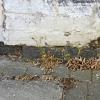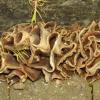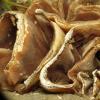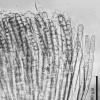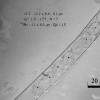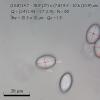
18-12-2025 21:17
Pol DebaenstThe identification took me to Byssonectria deformi

15-12-2025 07:09
 Danny Newman
Danny Newman
indet. Rutstroemiaceae sp. on unk. fallen leavesMc

19-12-2025 10:10
Patrice TANCHAUDBonjour, récolte réalisée en milieu dunaire, a

18-12-2025 17:23
 Bruno Coué
Bruno Coué
Bonjour,je serais heureux d'avoir votre avis sur c

18-12-2025 18:07
Margot en Geert VullingsThese plumes were found on rotten wood.They strong

17-12-2025 18:35
 Michel Hairaud
Michel Hairaud
Bonjour à tous/Hi to everyone I am passing along

15-12-2025 15:48
 Danny Newman
Danny Newman
Melanospora cf. lagenaria on old, rotting, fallen

15-12-2025 15:54
 Johan Boonefaes
Johan Boonefaes
Unknown anamorph found on the ground in coastal sa

15-12-2025 21:11
 Hardware Tony
Hardware Tony
Small clavate hairs, negative croziers and IKI bb
 Hi,
Hi,I am new to this site, so please forgive any mistakes.
I think this fungus is Peziza cerea.
Is that correct?
Best wishes,
Martin

Hi Martin,
bienvenue sur le forum Ascofrance !
If you follow Hansen & al. 2002 , P. cerea is synonymous to P. varia.
I wonder whether the measured spores are mature as they are still in the ascus , which may explain they are shorter as they should be for P. varia
Amitiés
Michel

Amitiés
Martin

The Piximetre data is as follows (Classical formula, 80% of measurements):
(13.8) 14.7 - 15.9 (17) x (7.8) 9.2 - 10.6 (10.9) µm
Q = (1.4) 1.43 - 1.7 (1.9) ; N = 50
Me = 15.3 x 10 µm ; Qe = 1.5
From that can we say it is definitely Peziza varia (= cerea)?
Best wishes,
Martin

Martin, these measurements actually match P. varia's, to my knowledge.
In many collections, fortoulism in paraphyses can be observed in P. varia, but this character (which I cannot observe on your pics ) is not compulsery
Amitiés
Michel


